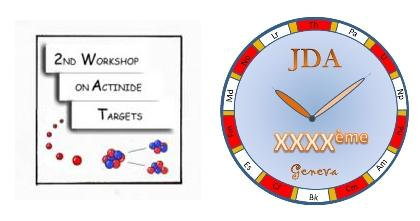Speaker
Mr
Sébastien Lectez
(CNRS)
Description
In order to understand the various mechanisms involved in the retention of the radionuclides on mineral surfaces, molecular simulations appear as a complementary tool to experiments. In this work, we propose to study the sorption of the solvated uranyl cation UO22+ on an abundant mineral surface, the gibbsite (Al(OH)3. The study of such complex systems may involve finite temperature simulations with a realistic representation of the interatomic interactions. We have therefore chosen to perform simulations within the Car-Parrinello molecular dynamics method [1], in which the trajectories of the nuclei are obtained by on-the-fly DFT calculations.
As a first step, a system consisting of an uranyl ion in solution was simulated. This step is crucial to understand the nature of the interactions between this ion and water molecules. The structure of the first and the second solvation shell was characterized, in good agreement with previous experimental [2] and theoretical [3],[4] studies.
The second part of our work concerns the hydration of the (001) gibbsite face. First, we optimized the bulk crystallographic parameters in order to build a (001) gibbsite face model. Calculations display very small relaxation of the surface atomic positions relative to the bulk atomic ones. Then, we simulated a system consisting of the solvent and the gibbsite face. Two different adsorption modes were identified for first layer water molecules on the (001) face, both involving hydrogen bonds with similar energies. These results are in good agreement with experimental findings [5].
In the last part, the full system including the solvated uranyl ion and the hydrated gibbsite (001) face was investigated. We simulated two adsorption mechanisms: the inner sphere and the outer sphere mechanism. Both states are stable, and the transition from one to another one involves the crossing of an energy barrier. We determined this activation energy using the umbrella sampling method, which allows us to predict the most stable adsorption mechanism.
References
[1] CPMD V3.5, J. Hutter et al., Copyright IBM Zurich Research Laboratory and MPI fur Festkorperforschung, (1995 – 2001).
[2] M. Aaberg et al., Inorganic Chemistry 22, 3986 (1983).
[3] P. Nichols et al., The journal of chemical physics 128, 124507 (2008).
[4] M. Buhl et al., Journal of the American Chemical Society 128, 6357 (2006).
[5] E. Veilly et al., the journal of chemical physics 129, 244704 (2008).
Author
Mr
Sébastien Lectez
(CNRS)
